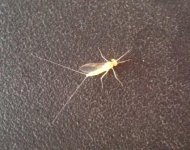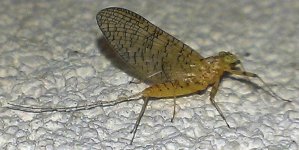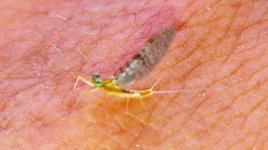redietz sums up my views on this very well. It is one thing to describe a particular fly pattern. And "BWO" is fine by me if you hold it to merely a color description.
But this is the hatch forum, where we're identifying bugs. And you know what? If someone tells me they want to fish the BWO hatch on Spring Creek, they are describing a BUG, not a pattern that can sometimes be used to fish said bug. With that description comes all sorts of expectations. For instance.
This bug is of the Baetis variety. While it occurs pretty much everywhere, limestoners are generally considered to have the large, fishable hatches. It occurs in the early spring (late Feb. through April, with March as "prime time"), and again in the late fall (October-November). Though the larger numbers and size are in the spring. It's a mid-day thing, it can start as early as 11:00 a.m. or so but usually early afternoon. You can nymph it effectively before they start hatching, but generally, duns are the way to go. Fishing is typically better in drizzly weather. Pay particular attention to the current breaks dividing the main current and side eddies, it's where they often feed. Feeding is typically done in "pods". The hatch tends to come in "waves", and you can use this to your advantage. It's a well known hatch, and the first major one of the year, plus lots of waters are closed at this time, so there's usually plenty of guys chasing it. However, often a wave starts up in the early afternoon and dies off, and most guys get in their cars and go home thinking it's over. Don't. Very often, there's another wave coming. Overall, the times I've hit this one right have been my best fishing on often difficult limestoners, and I have topped 30 on multiple occasions. This requires a good hatch with uncrowded streams, so you can go from pod to pod and take the dullards. If you can move, it's a lot more efficient to do this than to sit over the tougher fish, which are still rising but have wisened up a bit.
Yet, someone who frequents larger freestoners is gonna look at me cross-eyed after reading this. They are familiar with the Drunella variety, which is a summer time bug, and acts, well, a lot like a sulfur. Emergers, spinner falls, and all that jazz. Just with a BWO color scheme. It's an entirely different bug in everything else that matters.
So, in the hatch forum, when talking about bugs and not patterns to match, I for one will continue to discriminate between wildly different bugs which happen to share a common name.
Otherwise, lets just call em all mayfly's. After all, an Adam's works for all of them, right?






